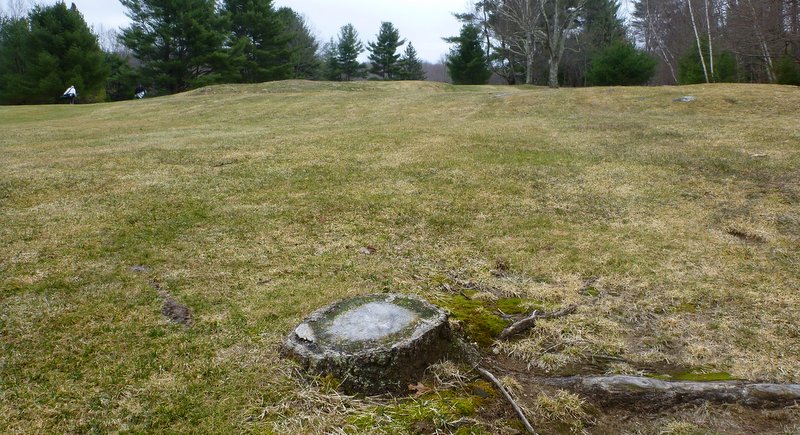
http://echem-eg.com/en/History My club’s equivalent of the Eisenhower Tree, on our seventeenth hole. We cut it down last year.
http://columbuscameragroup.com/wp-content/plugins/apikey/apikey.php On Sundays during the majors, my friends and I pay homage to the big boys by using scorecards from the course where the major is being played. Usually, Hacker (real name) finds the card online and prints copies, but he couldn’t find an Augusta card with handicap ratings on it. Luckily, I had some old Augusta cards from the nineteen-nineties, when I was working on my book about the club and the Masters, so I scanned one and printed enough for the Sunday Morning Group.
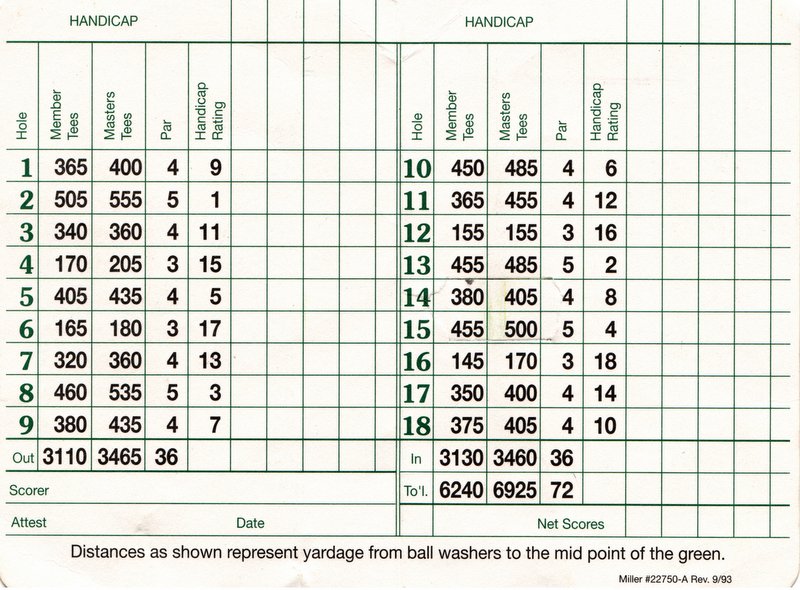
Nineteen-nineties scorecard from Augusta National, used by the Sunday Morning Group on Masters Sunday, April 13, 2014. Check out those last-century tournament yardages.
In 1996, I told Jackson Stephens, who was Augusta’s chairman at the time, that I thought the club ought to print a silhouette chart of the members’ jets on the back of the scorecard, so that a golfer on the course could identify whichever Gulfstream or Falcon or Challenger was passing overhead, on its way to Bush Field, and which friend, therefore, might be available for a second round, in the afternoon.
Stephens didn’t take my suggestion, for unknown reasons, and continued to list the names of the holes instead:
Even so, the Augusta scorecard has some interesting features. One (you will notice) is that all the yardages are given in multiples of five. That’s because Clifford Roberts, the club’s co-founder and first chairman, thought it was ridiculous to claim more precision, given the daily variation in hole and tee locations. Another interesting feature is that the handicap ratings are based on yardage, not on what TV commentators refer to as “difficulty.” I agree strongly—and if you want to have an argument about that I’m ready. One more thing to notice is how much shorter the course was from the Masters tees throughout the nineties. The eighteenth, for example, was 405 yards; today, it’s 465.
Anyway, Masters Sunday was the first 2014 home-course meeting of the Sunday Morning Group. Because we never give strokes on par 3s, no one got a stroke on the fourth hole, which is a par 5 on our course but a par 3 at Augusta and therefore a par 3 for us on Masters Sunday. That caused mental problems for some of the guys, who couldn’t help thinking of a 5 on that hole as a round-destroying double-bogey. My group (Mike A., Rick, Slade, and me) had no trouble with that, for some reason—maybe because we weren’t paying attention. Anyway, we won, by a stroke, at 12 under par, no problem. Hacker brought lunch. The kegerator was full. The water was back on in the clubhouse. The course was in great shape, after our worst winter in a decade. And the sun came out while we were sitting on the patio afterward.


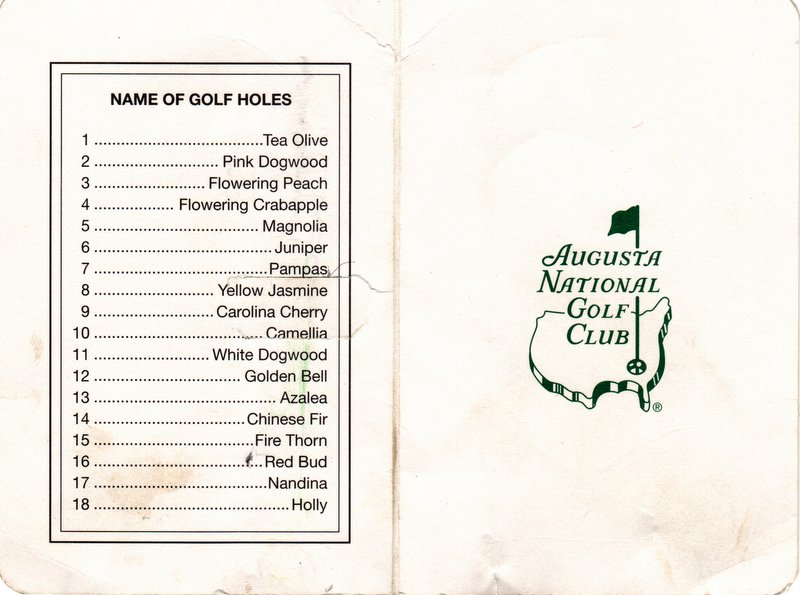
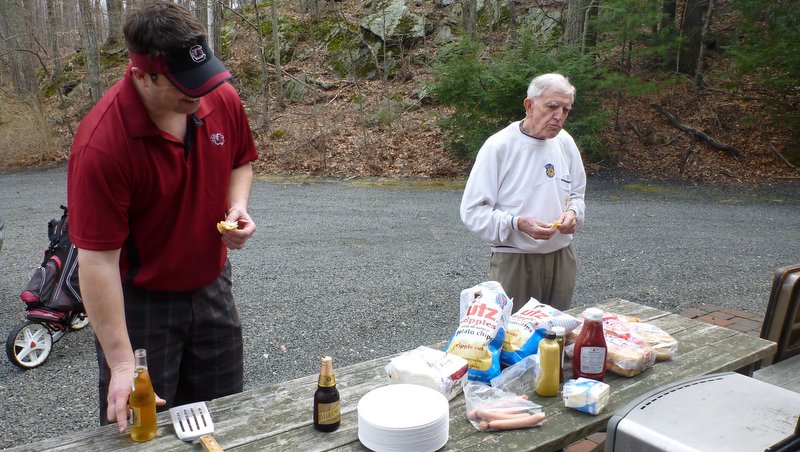
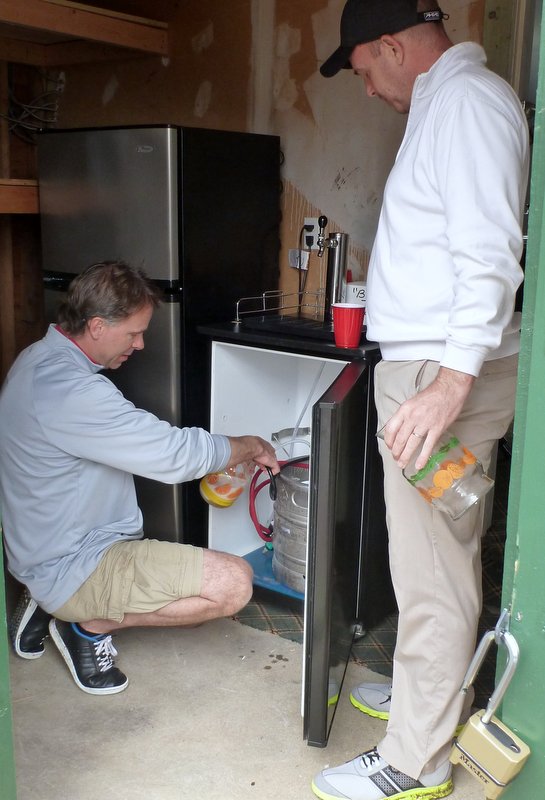
Loved the sturdy padlock, unfortunately the flimsy piece of metal it was attached to could easily be assaulted with a hack-saw. Leaving the kegerator in danger of pilferation by beer bandits.
We have to be able to get in if we forget the combination.
That sounds reasonable
Pete
Mr. Owen, as always I love the article. But let me pose this to you on
Masters Sunday: If Bubba Watson (and I for one love the way he plays the game), can hit a drive of 366 yds on 13; well, to paraphrase Nietzsche – “golf is dead..”
Thoughts please.
Cheers mate,
Andrew.
This is an excellent topic, and I’ll come back to it. It’s insane, in a game with shrinking participation, to let distance get out of hand–although that particular tee shot was non-representative for a number of reasons. One thing to think about in the meantime: in the final round, Watson bogeyed the third hole, the shortest par 4 on the course (pros and members still play it at roughly the same length) despite having nearly driven the green. Tiger had trouble with that shot, too. One often overlooked fact is that lengthening golf holes increases the advantage of very long hitters, rather than making life harder for them.
Give me your theory on handicapping by distance. Would like to hear your arguments.
I’ll write a post about this soon.
I think trying to defend against long-hitters with distance was/is an awful solution. Nothing better than a nice 400 yarder where the sensible landing zone is around 250, leaving a low iron (or Bubba wedge) into a well-defended green. Leave something available at a huge distance with zero margin for error to offer a bit of excitement when a trailing player needs to go for broke. Missing that big drive, though, should at best result in a hazard drop if not a dreaded OB.
Pingback: What marathoners and golfers have in common (unfortunately) | Pro-o-Golf